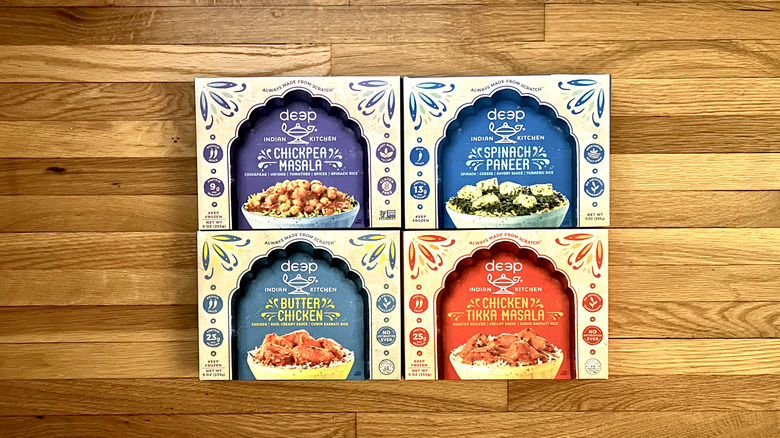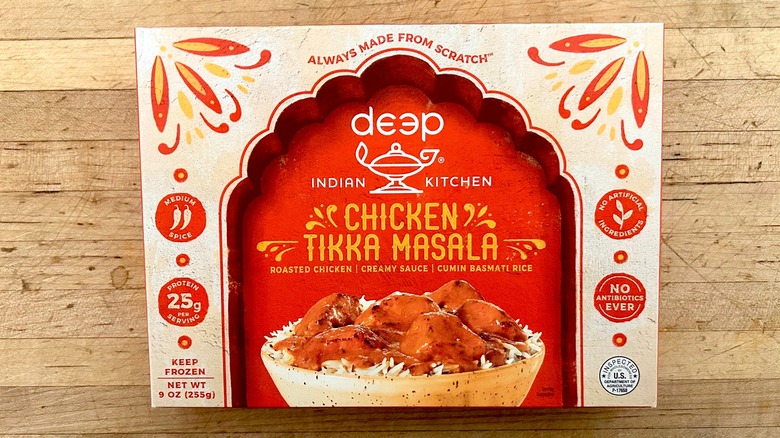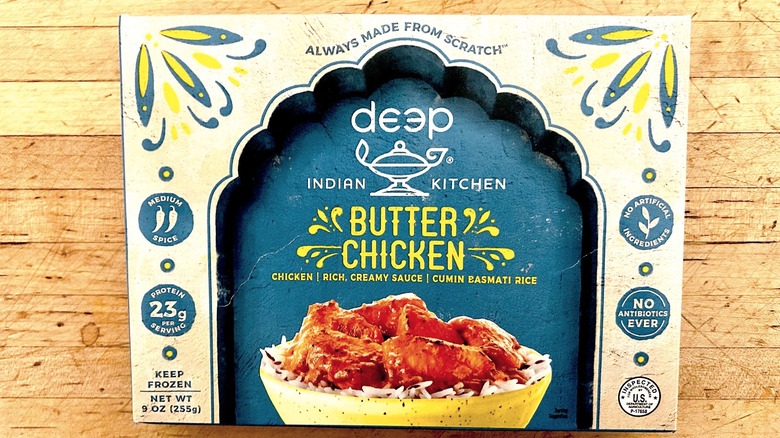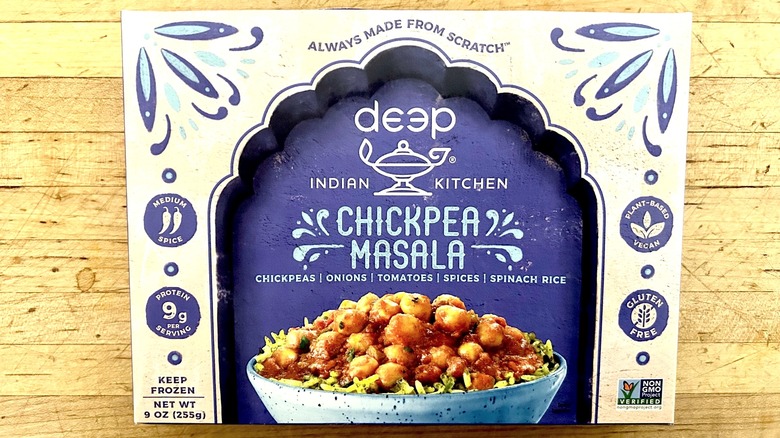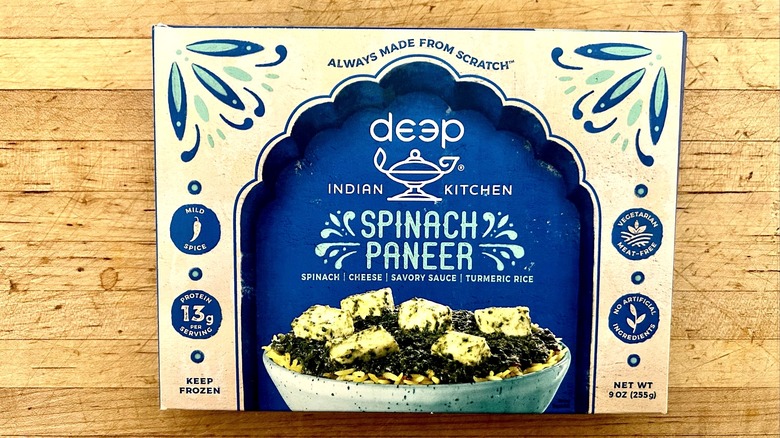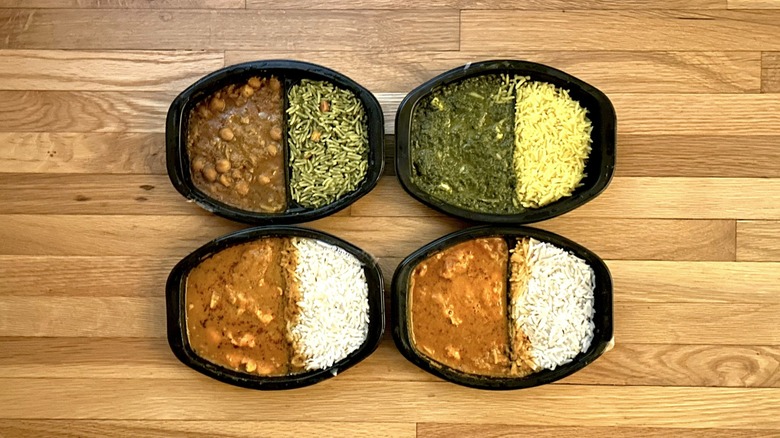Deep Indian Kitchen Frozen Entrées Review: These Exotic Freezer Meals Are So Good
Deep Indian Kitchen is a family-owned brand passionate about sharing its culture through every one of its frozen entrées, samosas, and more. Its recipes are family heirlooms passed down from generation to generation. They are executed in small batches without artificial flavors, colors, or preservatives.
These entrées are designed to be ready from the freezer to your plate in under five minutes. While the ability to serve up a quick meal is wonderful, what matters most is whether or not the food actually tastes good too.
We had a chance to sample four of Deep Indian Kitchen's entrées: Chicken Tikka Masala, Butter Chicken, Chickpea Masala, and Spinach Paneer. We evaluated them based on authenticity, ease of preparation, aroma, texture, and flavor. As Indian food lovers, we are harsh critics. Read on to see how these recipes fared in our taste test.
What does the Chicken Tikka Masala taste like?
The Chicken Tikka Masala entrée was quick and easy to prepare. It was fully cooked in under five minutes in the microwave. Typically, frozen food can have a dry texture and a somewhat muted flavor. Neither of these characterize this entrée. The aroma of intense earthy spices shone through.
The texture of the chicken, while perhaps slightly less moist than what you'd get if this had been freshly made, was quite pleasant. We were impressed with the fluffiness of the rice. It wasn't sticky, and each grain remained separate. It was cooked to nutty perfection, which is no small feat to accomplish.
The flavor of the chicken was spicy, but not overwhelmingly so. The sauce was a delightful balance of sweet and savory, with hints of acidity from the lemon juice, yogurt, and mango powder. We also appreciated the bold seasoning. It was rich with paprika, turmeric, and fenugreek and wasn't overly salty.
Each container has 370 calories, 13 grams of fat, 630 milligrams of sodium, 40 grams of carbohydrates, 2 grams of sugar, and 25 grams of protein. Overall, we give this dish an enthusiastic two thumbs up and can't wait to eat it again.
What does the Butter Chicken taste like?
The Butter Chicken entrée was also ready in under five minutes in the microwave. While we would be hard-pressed to choose a favorite among the recipes we sampled, this ranked pretty high. The flavors were authentic, rich, and bold. Each container has 400 calories, 19 grams of fat, 590 milligrams of sodium, 38 grams of carbohydrates, 2 grams of sugar, and 23 grams of protein.
The aroma of this dish began somewhat sweet, slowly mellowing into an earthy undertone chock full of onion and garlic. Frankly, it had us salivating in anticipation. As with the Chicken Tikka Masala, the chicken was surprisingly moist, if not as juicy as homemade. Again, we couldn't believe how well the rice maintained its fluffy texture, with each grain staying separate and perfectly cooked.
When it comes to the flavor of this dish, it was the spiciest of the bunch, though still not overly so. We have certainly eaten Indian food with more aggressive heat. We appreciated the nuanced hand used in applying the seasonings, which were bold yet layered. Salt is present but not dominant. The paprika and mango powder create a smoky and tart symphony in your mouth. Finally, we loved the rich buttery sauce, which luxuriously enveloped the chicken.
What does the Chickpea Masala taste like?
As people who often opt for plant-based proteins, we frequently search for well-executed vegetarian dishes. This Chickpea Masala was just that. Again, this dish cooked perfectly in under five minutes in the microwave.
The aroma of this dish was markedly pungent in acidity thanks to the tomato base. The mineral scent of the spinach in the rice also came through. Speaking of rice, this was our favorite iteration among the recipes we tried. Not just because the rice was prepared perfectly but because we enjoyed the spinach, carrots, and turmeric that seasoned it.
As far as the flavor of the chickpeas is concerned, they were lovely and abundant in a combination of sweet and savory notes. Highlights in this dish were the fenugreek and the mango powder. While the salt may have been a touch more prominent in this dish, as is evidenced by the sodium content, it was balanced well enough that it didn't distract. Finally, the spice level of this entrée was about equivalent to that of the Chicken Tikka Masala — potent but not overwhelming. Each container has 300 calories, 13 grams of fat, 830 milligrams of sodium, 46 grams of carbohydrates, 5 grams of sugar, and 9 grams of protein.
What does the Spinach Paneer taste like?
We are suckers for a good paneer, and this one did not disappoint. That said, spinach tends to be more of an acquired taste for some, so this might not be the most popular of the dishes we sampled. Nonetheless, we loved it. Of the recipes we tested, this one took the longest to cook, though it was still done in about five minutes.
The aroma of the Spinach Paneer was less exotic than the other three meals we sampled. It had hints of turmeric and fenugreek, but the predominant aroma was the minerality of the spinach. This dish is the least spicy of the bunch. The paneer itself had a lovely texture that was just the right combination of firm without being rubbery.
The slowly simmered spinach sauce is rich with aromatics but perhaps slightly less nuanced in flavor than the other sauces we sampled. Of the rice we tried, this was the only one to be a hint al dente. It was still edible and flavorful, just not as well executed as the others.
Each container has 310 calories, 17 grams of fat, 490 milligrams of sodium, 30 grams of carbohydrates, 3 grams of sugar, and 13 grams of protein. While this was our least favorite of the dishes we sampled, it was still a dynamite dish.
The final verdict
If you enjoy Indian food, add these entrées from Deep Indian Kitchen to your grocery list. They are available in the frozen food aisle at most major retailers nationwide as well as online retailers. Prices are around $5 each but may vary by location.
Having had the opportunity to eat authentic Indian food at both restaurants and in private homes, we can confidently say that these frozen meals are as good as anything you might find in a restaurant. The main difference is the level of heat, which is often far more intense in both restaurant and home-cooked Indian cuisine.
Can it replace a home-cooked Indian meal? Maybe not. That said, when you crave that exotic slow-cooked taste of Indian food but don't have time to make it, they sure hit the spot. We give Deep Indian Kitchen an enthusiastic A+ grade. We cannot wait to try some of its other dishes and know you will not be disappointed.
